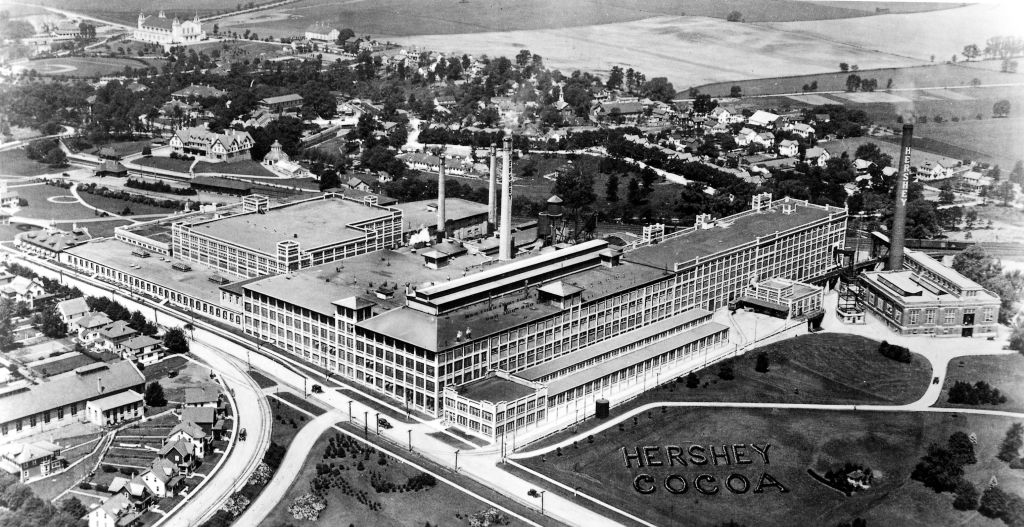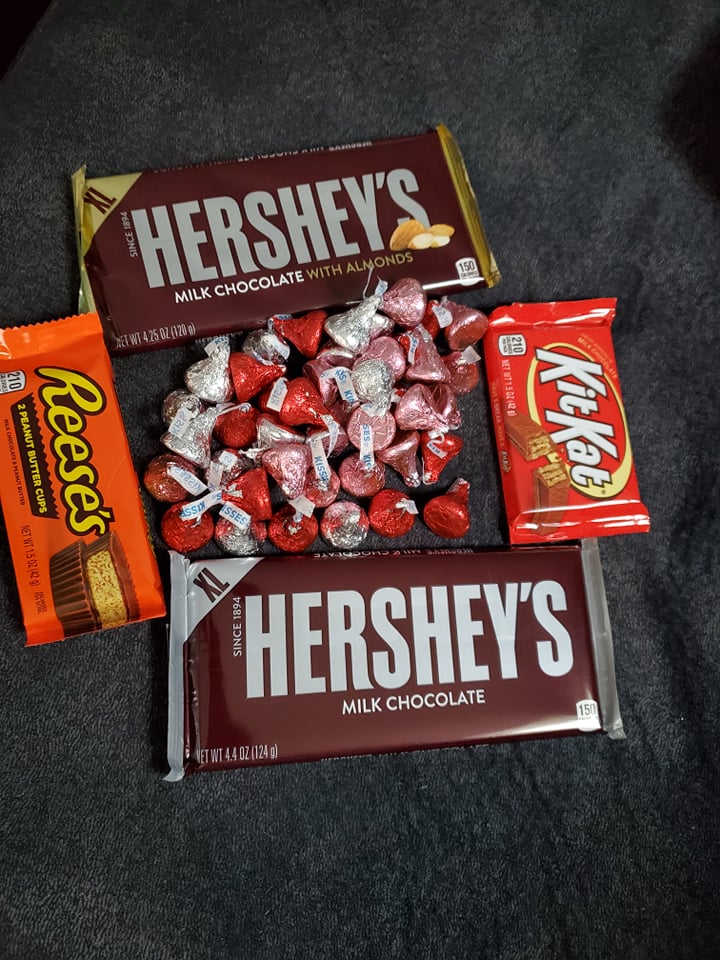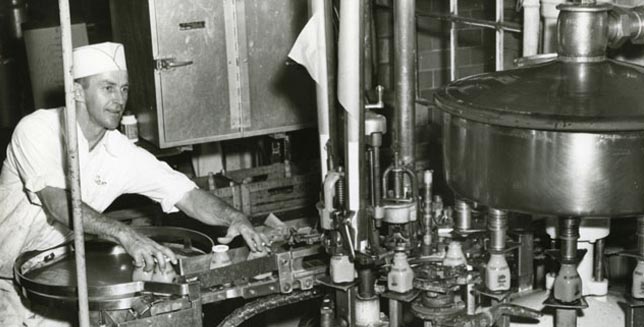Oh, how sweet it is! With Valentine’s Day right around the corner, let this post serve as a little reminder that chocolate is truly magnificent. It might strike you as odd to think that in the early 1900s, chocolate was considered a luxury item enjoyed primarily by the wealthy upper echelon of society. Milton Snively Hershey sought to change that. He believed everyone deserved chocolate!


Milton S. Hershey was born in rural Pennsylvania to a stern Mennonite mother and a dreamer of a father. Milton did not care much about “book learning” when he was young, though he was ever curious about the world around him. His father drifted in and out of life, and while his mother kept Milton close, she helped him land his first apprenticeship when Milton was 14 with a master confectioner. Milton became fascinated by the world of sweets and struck out on his own at the age of 18 with his first candy business in Philadelphia. With financial assistance from his family, he worked long days and nights through several failures. Milton was determined to make his candied world a success. After many failures, Milton went to Colorado to meet up with his father. While there, Milton sought work again as a confectioner, studying more about the candy-making business. His adventures eventually took him to New York, selling his tasty treats on the streets. Success once again eluded him, and Milton S. Hershey, battered but always hopeful, returned to Lancaster, Pennsylvania, to prove you can go home again.

By 1894, Hershey found success. Hershey believed that the requirements for success were quality ingredients in his products and his name on the wrapper. He needed no fancy marketing or advertising campaigns. His company grew to around 1,200 employees. Hershey was never afraid to roll up his sleeves and work alongside his employees, remaining committed to his work and dedicated to his employees despite his success and position. He epitomized good leadership. This would also mark the historic time when Hershey discovered the cocoa bean’s power. After attending an exhibition in Chicago in 1893, Hershey found chocolate-making machinery on display from Germany. While Hershey loved his caramel empire, this move would catapult him to become chocolate king. In the true entrepreneurial spirit, Hershey purchased the necessary equipment and got busy, flirting with nearly one hundred different varieties of chocolate goodies.

In 1900, the king of chocolate took his rightful throne in his chocolate empire by building a chocolate factory and an entire town. After selling the Lancaster Caramel Company in 1900 for one million dollars, Milton S. Hersey began construction on his factory and an entire town – a town for his employees to reside and enjoy their lives to the fullest. Unlike the hillside slums famous in steel cities, Hershey wanted his employees to feel at home in the beauty of rolling hills with access to all the comforts of a well-functioning town. Hershey had incredible drive and a spirit and vision that nobody could hinder. Hershey especially liked the location because it gave him access to locally sourced ingredients. (Now, there is a phrase we hear a lot about even today!) The town he built included a post office, bank, department stores, churches, and a continuous supply of fresh water and easy railway access. Hershey built his own beautiful home within walking distance to the factory. Hershey provided the town with an outdoor amphitheater and an indoor ice rink, and, in 1909, the famous Hershey Park opened to the public, and Hershey took some time off to travel the world with his ailing wife. Catherine Hershey suffered from a neurological disease, and her illnesses never allowed them to have children. Together, Milton and Catherine opened the Hershey Industrial School for orphans. Hershey not only invested financially in the school itself, but he sought to invest in the children attending the school, giving them an opportunity and the tools to succeed later in life. Many students there went on to work in high-level jobs at the Hershey Chocolate Factory. (The Hershey Archives contains a wide variety of oral histories of employees and former students.)

In 1916, Hershey began looking to expand his empire in Cuba. According to Thomas R. Winpenny, “Many modern corporations seek to control their sources of raw materials. A shortage of sugar during World War I brought home this truism to Milton Hershey.”[1] As the sugar market collapsed in 1920 resulted in massive economic loss for Hershey – losses in the millions – Hershey had to take out substantial loans and endure bankers present at his factory to monitor operations. No sooner did Hershey rebound from that near catastrophe the stock market crashed in 1929. Hershey refused to become a victim of dire circumstances. He kept building and ensured his employees stayed employed. He began construction on the incredible Hotel Hershey. Completed in 1933, this opulent hotel still stands today. Life was good for Hershey and his employees. However, in 1937, his employees went on strike. Hershey was stunned because he was so good to his employees, but strikes erupted throughout the country. Hershey’s final adventure came during World War II when the company began making high-energy bars for the American troops. Hershey was in his 80s by this time, but he still loved experimenting. The bars were a huge success and a tasty treat for the troops.

On October 13, 1945, Milton S. Hershey died at 88. Throughout his life, he exemplified the qualities of good leadership. Milton S. Hershey never turned away from hard work, possessing true grit and fiery determination for everything he did. Additionally, his entrepreneurial spirit always propelled him to experiment and never fear innovation. He also held a continuous creative vision for future generations to succeed, still providing us with a world of chocolaty sweetness. He stayed committed to investing in people and never straying from his beliefs that people were the driving force behind his success. The Hershey Company “faced far more challenging periods of competitive and economic pressure in its century-long history and had survived them all, in large part because of Hershey’s vaunted reservoirs of employee morale and pride.”[2]


Footnotes:
[1] Thomas R. Winpenny. “Milton S. Hershey Ventures into Cuban Sugar.” Pennsylvania History: A Journal of Mid-Atlantic Studies 62, no. 4 (1995): 491.
[2] Rick Kash. “The Hershey Company: Aligning Inside to Win on the Outside.” Ivey Business Journal (Online) (Mar, 2012): 2. http://ezproxy.liberty.edu/login?qurl=https%3A%2F%2Fwww.proquest.com%2Ftrade-journals%2Fhershey-company-aligning-inside-win-on-outside%2Fdocview%2F1038945128%2Fse-2%3Faccountid%3D12085.
Bibliography:
Edgar, Blake. “The Power of Chocolate.” Archaeology 63, no. 6 (2010): 20–25.
Kash, Rick. “The Hershey Company: Aligning Inside to Win on the Outside.” Ivey Business Journal (Online) (Mar, 2012): 1, http://ezproxy.liberty.edu/login?qurl=https%3A%2F%2Fwww.proquest.com%2Ftrade-journals%2Fhershey-company-aligning-inside-win-on-outside%2Fdocview%2F1038945128%2Fse-2%3Faccountid%3D12085.
Kurie, Peter. In Chocolate We Trust: The Hershey Company Town Unwrapped. Philadelphia: University of Pennsylvania Press, 2018. Accessed January 29, 2022. ProQuest Ebook Central.
Winpenny, Thomas R. “Milton S. Hershey Ventures into Cuban Sugar.” Pennsylvania History: A Journal of Mid-Atlantic Studies 62, no. 4 (1995): 491–502.
Hershey Community Archives